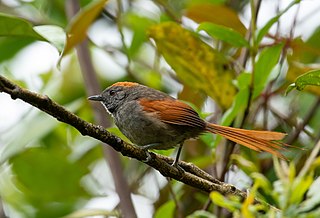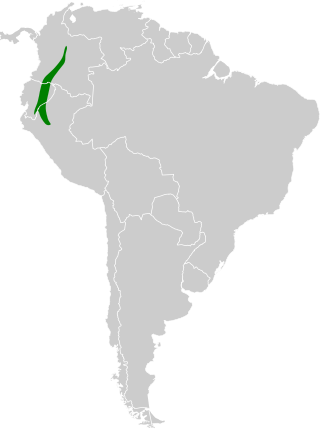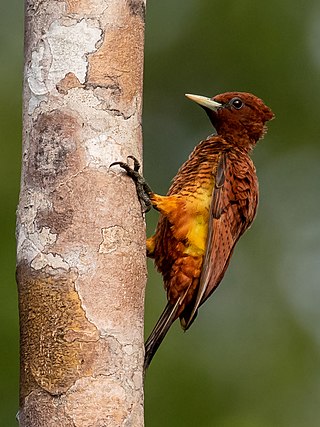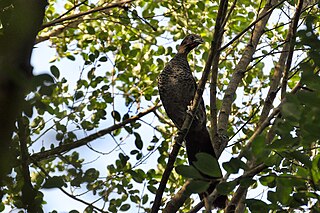
The grey-headed chachalaca is a member of an ancient group of birds of the family Cracidae, which includes chachalacas, guans, and curassows. It is found from Honduras to Colombia.

The little chachalaca is a bird in the family Cracidae, the chachalacas, guans, and curassows. It is found in Brazil, French Guiana, Suriname, Guyana, Venezuela and possibly Colombia.

The rufous-tailed hummingbird is a medium-sized hummingbird in the "emeralds", tribe Trochilini of subfamily Trochilinae. It is found from east-central Mexico through Central America and Colombia into Ecuador and Venezuela.

The rufous-throated sapphire is a species of hummingbird in the "emeralds", tribe Trochilini of subfamily Trochilinae. It is found in Bolivia, Brazil, Colombia, Ecuador, the Guianas, Peru, Venezuela and possibly Argentina and Paraguay.

The sickle-winged guan is a species of bird in the chachalaca, guan, and curassow family Cracidae. It is found in Bolivia, Colombia, Ecuador, and Peru.

The nocturnal curassow is a species of bird in the family Cracidae, the chachalacas, guans, and curassows. It is found in Brazil, Colombia, Ecuador, Peru, and Venezuela.

The chestnut-winged chachalaca is a species of bird in the family Cracidae, the chachalacas, guans, and curassows. It is endemic to Colombia.

The speckled chachalaca is a species of bird in the family Cracidae, the chachalacas, guans, and curassows. It is found in Bolivia, Brazil, Colombia, Ecuador, and Peru.

The buff-browed chachalaca is a species of bird in the family Cracidae, the chachalacas, guans, and curassows. It is endemic to Brazil.

The rufous-bellied chachalaca is a species of bird in the family Cracidae, the chachalacas, guans, and curassows. It is endemic to western Mexico.

The streak-backed canastero is a species of bird in the Furnariinae subfamily of the ovenbird family Furnariidae. It is found in Argentina, Bolivia, Colombia, Ecuador, Peru, and Venezuela.

The chestnut-winged foliage-gleaner is a species of bird in the Furnariinae subfamily of the ovenbird family Furnariidae. It is found in Bolivia, Brazil, Colombia, Ecuador, Peru, and Venezuela.

The dark-breasted spinetail is a species of bird in the Furnariinae subfamily of the ovenbird family Furnariidae. It is found in Bolivia, Brazil, Colombia, Ecuador, and Peru.

Azara's spinetail is a species of bird in the Furnariinae subfamily of the ovenbird family Furnariidae. It is found in Argentina, Bolivia, Colombia, Ecuador, Peru, and Venezuela.

The dusky spinetail is a species of bird in the Furnariinae subfamily of the ovenbird family Furnariidae. It is found in Colombia, Ecuador, and Peru.

The ruddy spinetail is a species of bird in the Furnariinae subfamily of the ovenbird family Furnariidae. It is found in Bolivia, Brazil, Colombia, Ecuador, Guyana, Peru, Suriname, Venezuela, and possibly Guyana.

The scaly-breasted woodpecker, also known as the scale-breasted woodpecker, is a subspecies of bird in subfamily Picinae of the woodpecker family Picidae. Some taxonomists consider it a separate species. It is found in Bolivia, Brazil, Colombia, Ecuador, Peru, and Venezuela.

The East Brazilian chachalaca is a species of bird in the family Cracidae, the chachalacas, guans, and curassows. It is endemic to eastern Brazil.

The scaled chachalaca is a species of bird in the family Cracidae, the chachalacas, guans, and curassows. It is endemic to Brazil.

The chestnut-headed chachalaca is a bird in the family Cracidae, the chachalacas, guans, and curassows. It is endemic to Brazil.























